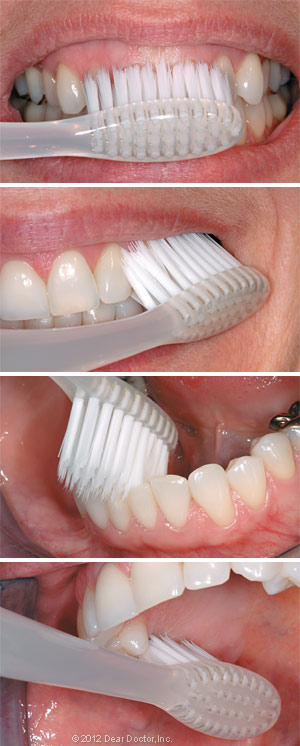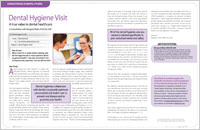If you’re like most people, you probably learned how to brush as a child… and chances are, you haven’t thought about it much since then. That’s understandable — but there may come a point when we find our oral hygiene techniques could use improvement. Here are a few tips on the proper way to brush your teeth… plus, a reminder of why we do it.
First, the reasons why: Brushing is an effective way to remove plaque — a sticky, bacteria-laden biofilm that clings stubbornly to your teeth. The bacteria in plaque produce acids, which erode the tooth’s enamel and may lead to tooth decay. Plaque can also cause gum disease and bad breath. In fact, it’s believed that over 90% of dental disease is caused by plaque accumulation alone.
Besides removing plaque, the fluoride in toothpaste strengthens tooth enamel and makes teeth more decay-resistant. Plus, brushing makes your mouth feel cleaner and your breath smell fresher. While there is no single “right” way to brush your teeth, there are a number of techniques that can help you get them squeaky-clean. So why wait — let’s take a refresher course in brushing right now!
Proper Brushing Technique

- To begin, select a small-headed, soft-bristled toothbrush, grasp it gently with your fingers (not your fist), and squeeze on a pea-sized dab of fluoride toothpaste.
- Hold the bristles gently against the outside of your top teeth, near the gum line, at about a 45-degree angle upward.
- Sweep the brush gently back and forth over teeth and gums in soft strokes — or, if you prefer, use an elliptical (circular) motion to clean the teeth.
- Be sure to clean the spaces between teeth: You can use a sweeping motion to brush food particles away from the gums.
- When you have done one brush-width, move to the adjacent area of your teeth and repeat. Keep going until you have finished cleaning the outside of the whole top row of teeth.
- Move to the bottom teeth. Repeat the procedure, tilting the brush down toward the gum line at about 45 degrees. Finish cleaning the outside of the bottom teeth.
- Go on to the inside of the top teeth. Tilting the bristles up toward the gums, clean the inside of the top teeth with gentle but thorough strokes.
- Move to the inside of the bottom teeth. Tilt the brush down and repeat the procedure.
- Now it’s time for the chewing surfaces: Holding the bristles flat against the molars, clean the ridges and valleys of the back teeth. Do this for all the top and bottom teeth.
- Finally, brush your tongue gently to remove bacteria and freshen breath.
Check Your Work

How good a brushing job did you do? One way to get an idea is by simply running your tongue over your teeth: If they feel slick and smooth, then chances are they’re clean. If not, you should try again. To know for sure whether you’re brushing effectively, you can use a “disclosing solution” — a special dye that highlights plaque and debris your brushing missed.
One common error is not brushing for long enough: two minutes is about the minimum time you need to do a thorough job. If you have music in the bathroom, you could try brushing along with a pop song; when the song’s over, you’re done! But no matter your musical taste, good brushing technique can go a long way toward maintaining tip-top oral hygiene.
Variations for Comfort
If you’re having trouble with the two-finger method, here’s another way to try flossing: Just tie the same amount of floss into a big loop, place all your fingers (but not thumbs) inside the loop, and work it around your teeth with index fingers and thumbs. All the other steps remain the same.
Once you’ve got the basics down, there are a few different types of flosses you can try, including flavored, waxed, and wider width. Some people find waxed floss slides more easily into tighter gaps between teeth or restorations — but it may not make that satisfying “squeak” as it’s cleaning. Others prefer wide floss for cleaning around bridgework. But whichever way works best for you, the important thing is to keep it up!



